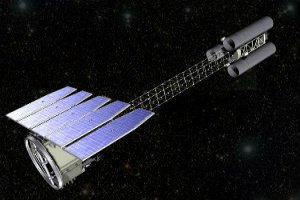
NASA has awarded the launch services contract for the agency’s Imaging X-Ray Polarimetry Explorer (IXPE) mission to SpaceX. Once launched, IXPE will measure polarized X-rays from black holes, neutron stars and more. The data collected will enable astronomers to peer behind the curtain of some of the most exotic and mysterious astronomical objects in our universe.
The IXPE contract is part of NASA’s Launch Services Program (LSP). SpaceX has previously launched two LSP missions (Jason-3 and TESS) and has been awarded three others (SWOT, Sentinel-6A, and Dart) in addition to IXPE. This trend appears to indicate the agency’s growing trust in SpaceX with this latest award going so far as to allow the mission to be launched aboard a flight-proven Falon 9.
“SpaceX is honoured that NASA continues to place its trust in our proven launch vehicles to deliver important science payloads to orbit,” said SpaceX president and COO Gwynne Shotwell in a statement. “IXPE will serve as SpaceX’s sixth contracted mission under NASA’s LSP, two of which were sufficiently launched in 2016 and 2018, increasing the agency’s scientific observational capabilities.”
With a launch mass of 320 kilograms, IXPE will not be much of a challenge for the SpaceX Falcon 9, which is capable of launching 22,800 kilograms to low Earth orbit. There will, as a result, be excess payload capacity at launch.
At just $50.3 million, the contract is unlikely to make SpaceX much profit, with a mission aboard a flight-proven Falcon 9 reportedly costing $50 million without mission-related costs. As a result, SpaceX may use the excess payload capacity to launch its own Starlink satellites or an additional commercial payload. It is, however unclear whether or not NASA will allow additional payloads to share IXPE’s ride.
The IXPE mission is expected to lift off from the Kennedy Space Center in April 2021.
About IXPE:
The Imaging X-ray Polarimetry Explorer (IXPE) will get information regarding the polarization state of light from astrophysical sources. This will provide insight into the X-ray production in objects such as neutron stars and pulsar wind nebulae, as well as stellar and supermassive black holes.
The launch mass of IXPE is 320 kilograms. IXPE will be launched over SpaceX FALCON 9 which is capable of launching 22,800 kilograms to low Earth orbit (LEO). There will also be excess payload capacity at launch.
NASA and SpaceX:
The IXPE mission is a part of the US space agency’s Launch Services Program (LSP). SpaceX has previously launched two LSP missions namely Jason-3 and TESS. It has also been awarded three other missions, SWOT, Sentinel-6A, and Dart by NASA earlier.
IXPE will be sixth contracted mission of SpaceX under NASA’s LSP. Two of the missions were successfully launched in 2016 and 2018, increasing the agency’s scientific observational capabilities.





